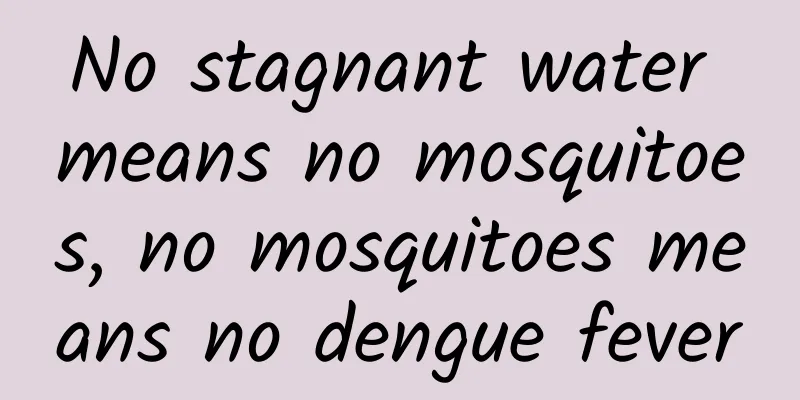No stagnant water means no mosquitoes, no mosquitoes means no dengue fever

|
Dengue fever is a disease transmitted by mosquitoes. Its main transmission vector in Jiangsu is Aedes albopictus, commonly known as the "flower mosquito". The breeding and reproduction of Aedes albopictus cannot be separated from water. Its eggs, larvae and pupae all live in water. Without water, there will be no mosquitoes. Jiangsu CDC reminds: Cleaning up small stagnant water in key places such as balconies, courtyards, front and back yards of houses, community public environments, construction sites and parks every 3 to 5 days is a fundamental measure to effectively control the density of Aedes albopictus and prevent the spread of dengue fever infection. Citizens are requested to start with themselves and take action together to clear stagnant water, kill mosquitoes and prevent dengue. Treatment methods for various breeding grounds: 1. Hydroponic plants **Treatment method: **Change the water every 3-5 days and wash the plant roots and the inner wall of the container. 2. Potted plant tray Treatment method: Dump out water in time when there is water accumulation. 3. Large lotus pond (pool), landscape pool Treatment method: You can release ornamental fish or use pesticides to kill mosquito larvae. 4. Idle containers: such as cans, jars, vats, barrels, etc. in courtyards and green belts. Treatment method: Cover the container or turn it upside down after pouring out the accumulated water to prevent water from accumulating at the bottom of the container after inversion. 5. Water storage containers: water tanks, buckets, etc. Treatment method: Cover the container and check every 3 to 5 days to see if there are mosquito larvae breeding. 6. Waste containers: discarded mineral water bottles, cans, disposable lunch boxes, glass bottles, cans, plastic films, etc. Treatment method: Dispose of it as garbage in time. 7. Waste tires Treatment method: Collectively stack indoors. Stack outdoors under a canopy or cover with a tarpaulin. When rain protection measures cannot be taken, apply mosquito larvae insecticide to water storage areas to avoid omissions. You can also use drilling, sand piling and other methods to avoid water accumulation. 8. Tree holes, bamboo stumps Treatment method: The bamboo roots can be split with a cross-hatch knife to avoid water accumulation. Sand or concrete can also be used to block the bamboo roots and tree holes. 9. Sewer manhole Treatment method: Use hot smoke to kill adult mosquitoes at sewer manholes with stagnant water, and release mosquito larvae insecticides into the water. 10. Water accumulation on the roof Treatment method: Clean up the silt and garbage, unclog the drain outlet, and drain the stagnant water. 11. Drainage ditches and water collection wells in basements and parking lots Treatment method: Clear the drainage ditch, seal the water collection well or place insecticide to kill mosquito larvae. 12. Other accumulated water that is difficult to remove for the time being Treatment method: Cover and seal or use insecticide to kill mosquito larvae. |
<<: Pay attention to swallowing care to escort the recovery of critical illness
Recommend
Why does applying a facial mask cause allergies? How to deal with allergies after applying a facial mask
I believe that many female friends like to apply ...
Menstruation is delayed and leucorrhea is like paste
If menstruation is delayed and the leucorrhea is ...
Can I take Fenbid while breastfeeding?
Almost all drugs can be transported into breast m...
Do uterine fibroids cause pain?
Uterine fibroids are one of the most common gynec...
What are the treatments for cervical cysts?
Cervical cysts are very harmful to women's bo...
How to regulate high blood pressure after childbirth
Hypertension is very common after giving birth an...
Reasons for sudden delay of menstruation
Sudden delay of menstruation is very common. Many...
Zhihu Financial Report: In Q3 2023, Zhihu’s total revenue was RMB 1.0222 billion, and the number of paid members increased by 35.9%!
Recently, Zhihu released its third-quarter financ...
Are you still misunderstanding hormones? Those misunderstandings about nasal hormones
Recently, a news story about Ms. Sha who suffered...
How to treat dampness in women's body and what to eat
Women cannot have internal moisture in their bodi...
Why do I feel nauseous at night during pregnancy?
Pregnant women should pay attention to their phys...
Actively lead a healthy life, and exercise creates wonderful things - a wheelchair hero's autobiography
Authors: Xie Haixia, Pan Jing; Chief Judge: Zhai ...
What are the dangers of wearing a sponge bra?
Speaking of underwear, many women wear sponge bra...
Can I eat kale during menstruation?
Chinese kale is a very common vegetable for us. W...
Chinese medicine prescription for postpartum milk deficiency and milk production
What are the Chinese herbal medicine prescription...









